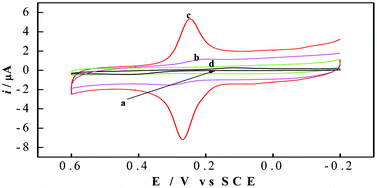Dopamine sensor development based on the modification of glassy carbon electrode with β-cyclodextrin-poly(N-isopropylacrylamide)†
Abstract
A stable electroactive film of β-cyclodextrin-poly(N-isopropylacrylamide) (CD-PNIPAM) was successfully prepared on a glassy carbon electrode (GCE) surface using an electroadsorption method for the determination of


 Please wait while we load your content...
Please wait while we load your content...